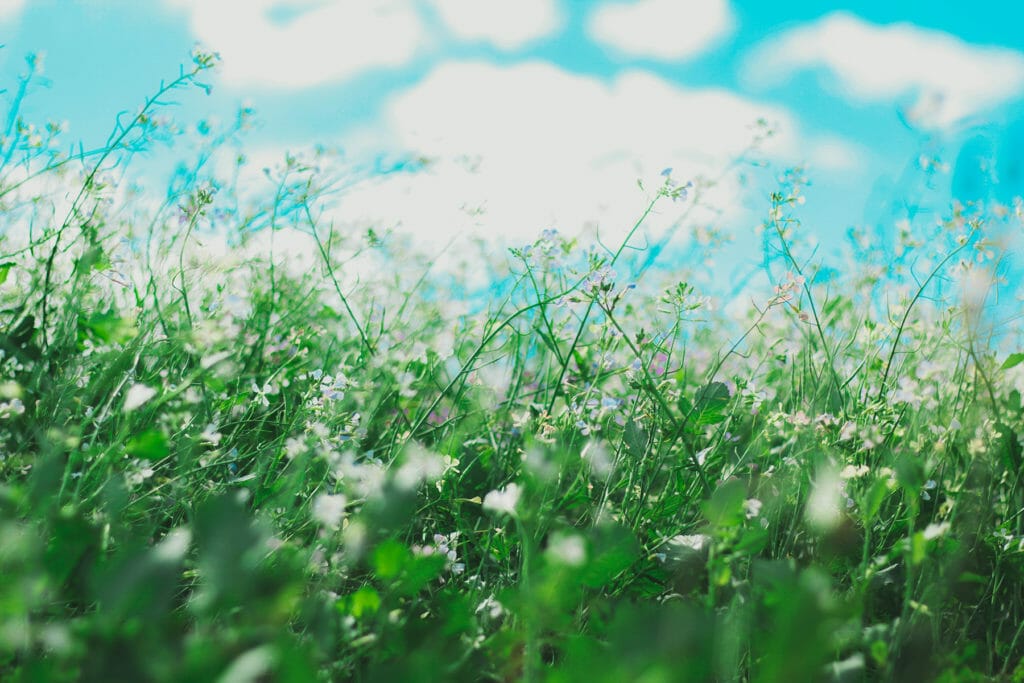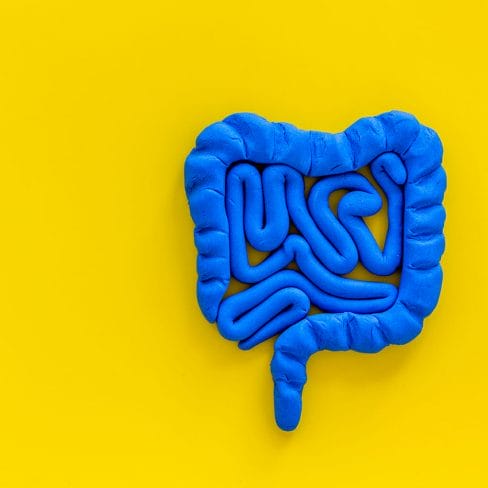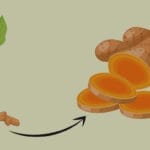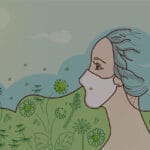Hay fever and natural ways to help
Hay fever season has well and truly landed in the UK moving from predominantly tree pollens to increased levels of grass pollens. We are all starting to venture outside more and more, following the announcements last week by Boris Johnson. Our post lockdown world will be phased return to normal life, whatever that may end up being for each of us, but as we move through spring, for many of us, this means itchy eyes and lots of sneezing!
In the UK we have some of the highest rates of allergic conditions in the world with a staggering 44% of British adults now suffering from at least one allergy and the number of sufferers is on the rise, growing by around 2 million people a year.[1] Hayfever (Allergic Rhinitis, AR) is the most common form of non-infectious inflammation of the nasal cavities and production of mucus, affecting between 10% and 30% of all adults and as many as 40% of children in the UK.[2] Symptoms include sneezing, itchy eyes, wheezing, coughing, hives and runny nose with 57% of adult patients and up to 88% of children with AR reporting sleep problems leading to daytime fatigue and decreased cognitive functioning.[2] Whilst these symptoms may not be life-threatening forms of allergic reactions they are still highly debilitating for everyday living and impact us up and down the country.
So what can be done to naturally support the body’s resilience to this common allergy to pollen? Fortunately, many natural tools for addressing hay fever, and allergies in general, exist without the side effects of steroid, anti-histamine and other pharmaceutical treatments.

Supporting the immune system
The key to any natural approach when addressing hayfever is to be prepared. In order to support the body’s immune system, preparation for beating the seasonal allergy symptoms needs to start now.
At the beginning of the spring season where plants are beginning to flower and produce their pollen but it’s not just grasses and hay that cause allergic reactions for seasonal allergies. Early season hayfever sufferers tend to react to tree pollen, such as alder, ash, birch, hazel and oak that are carried in the wind. Late season hayfever sufferers react more to specific grass and agriculture crop pollens, such as rapeseed oil, which start to emerge early May and continue to around mid-August. During this time weeds such as nettle and mould spores are also released making these high summer months a veritable cocktail of nature’s allergens!
Of course, the reactions to certain pollens may not be mutually exclusive and some people find themselves resorting to anti-histamine and/or steroid medications for most of the spring and summer. Side effects from these pharmaceuticals include drowsiness, dizziness, dry mouth, nausea, sleep disturbances and more. Natural, side-effect-free alternatives are preferable to fully enjoy those spring and summer holidays.
When a person encounters an allergen such as grass or tree pollen, an antibody called immunoglobulin E (IgE) is activated. IgE stimulates two other immune cells – mast cells, eosinophils and basophils – to release a flood of chemicals, including histamine, which helps the body expel the offending allergen. This response evolved long ago to combat threats like snake venom or parasites, but more and more people now have over-stimulated immune and stress responses meaning they react to harmless pollens, dust, medications, foods, detergents and more.
To tackle pollen allergy we can, therefore, approach it in several synergistic ways – this is important because, short of living in a bubble, we will always be exposed to environmental pollens so reducing this type of allergenic exposure is not always as easy as when addressing food allergies, where the offending allergens can be avoided in the diet.
Synergistic approaches to naturally manage hay fever include:
- Reduce and balance mast cell response – these specialist immune cells respond to IgE and release the chemical mediator histamine within the mucus membranes of the nose and lungs resulting in typical AR (hayfever) symptoms of sneezing; itchy, red and sore eyes; runny nose etc.
- Strengthen the immune system to balance IgE response to allergens.
- Support gut and adrenal health.
Nature’s Anti-histamine
Quercetin is an antioxidant plant pigment from the flavonoid family of phytonutrients and is often referred to as “nature’s antihistamine”. It is found in many plants, fruits and vegetables including onions, green tea, apples, cherries, broccoli, tomatoes, berries and green tea. Flavonoids are known for their antioxidant activity and support a wide range of health benefits including the immune system’s response to allergens. [3]
Quercetin actually helps to stabilise the cell walls of the immune components that contain histamine, namely mast cells. This stabilisation helps prevent the release of histamine. The allergy symptoms simply will not occur without the release of histamine, even though you have inhaled pollen, animal hair, or whatever normally triggers allergy attacks.
This places daily supplementation with a non-citrus derived source of quercetin, encapsulated with other antioxidants like Vitamin C to prevent degradation (auto-oxidation) and improve absorption, an important part of a natural approach to addressing hay fever.
It’s certainly an important phytonutrient and one you may consider supplementing with as part of your daily regime.[7]

Vitamin C
Vitamin C is something we often think of for colds, illness prevention and more recently with immune support in relation to COVID-19, but it can have a significant impact on allergies as well. Vitamin C positively impacts allergies from a variety of directions:
- It helps to stabilise mast cells.[8]
- Supports histamine breakdown and promotes immune system balance.[9]
- Reduces eosinophilic infiltration into challenged tissues like the lungs and sinus membranes.[10]
Vitamin C can be found in fresh food sources such as vegetables and fruits but is often required at higher doses than the daily diet can provide to support the immune system, especially during allergy season. For this reason, the mixed ascorbate form of Vitamin C can be taken at doses from 1g upwards, without the laxative effect that larger doses of the ascorbic acid form of Vitamin C can result in.
Vitamin D3
Vitamin D3 is often used to support the function of the immune system for illness prevention, but in addition, this sun-derived vitamin also improves the regulatory function of the immune system, balancing the allergic response in conditions such as hayfever as well.[11]
Vitamin D is a fat-soluble nutrient so unless you’re lucky enough to have had a month in the sunshine over the long UK winter months, you are likely to have low levels of this important nutrient in your body as we enter allergy season. Food sources, such as eggs, mushrooms and oily fish, provide some Vitamin D but the body requires sunshine to manufacture the levels from the skin that we need to support immune function. It’s therefore common for adults and children in the UK to require some form of Vitamin D supplement (ranging from between 1000 to 5000iu for adults) to see them through the winter months and importantly support immune health into the spring and summer.
Many Vitamin D3 products and Vitamin D3 dietary sources are derived from animal sources so are not suitable for vegans, or indeed acceptable for some vegetarians. Help is at hand! Supplements are now available that use vegan forms of Vitamin D3 (cholecalciferol – one of the bioactive forms of Vitamin D the body requires) derived from special, organic lichen. These small and unique plant species have many attributes including the ability to photosynthesise, survive in extreme climates and the ability to grow and accumulate meaningful levels of useful nutrients, including Vitamin D3. Vegan D3 supplements are fast becoming a popular way to ensure levels are maintained of this important vitamin.
You can’t escape the gut

As we’re sure you’re well aware, the health of the body begins in the gut – this statement is true for allergies as well. Reducing the intake of foods which cause inflammation, determined via testing or simply by avoiding highly suspect foods like gluten and dairy, can help to reduce the inflammatory response overall and thus mitigate allergies. Foods such as dairy and gluten can also worsen mucus symptoms as the body responds in a protective fashion by increasing mucus secretions – thus, they are also often avoided when one has a cold or other mucus-related conditions. Reducing the intake of high histamine foods may also help reduce the body burden of histamine and can have a significant impact on allergies for some individuals.
Quercetin also has promising positive effects on the gastrointestinal system where it may reduce inflammation, improve gut microbiota, enhance intestinal barrier function and provide an overall protective effect.[12],[13]
Intestinal dysbiosis occurs when unfriendly bacteria imbalance probiotic bacteria. Factors that can promote dysbiosis include antibiotics, steroids including birth control pills, alcohol, bacterial infections, stress, travelling or a poor diet. This state of gut bacteria imbalance can be a key driver for dysregulated gut and immune system dysfunction.
Key features for taking a probiotic supplement with proven strains to support health include:
- Helps maintain a healthy intestinal probiotic balance.
- Supports the structure and functional integrity of the epithelial lining.
- May boost immune response and support resistance.
- Can produce vitamins, enzymes and organic acids that support normal intestinal pH.
Probiotic bacteria supplements containing certain strains of Lactobacilli acidophilus have been shown to improve nasal symptoms, reduce allergy medication use, and improve overall well-being.[14],[15]
Specifically, some of the bioactive human strains of certain Lactobacilli include:
- L. acidophilus – produces DL-lactic acid, amylase (carbohydrate-digesting enzyme), and proteins (bacteriocins) that limit the growth of other bacteria. It is resistant to bile and gastric acids so can survive in the intestinal tract.
- L. rhamnosus – supports the activity of cells in the immune system. It also sometimes occurs in the large intestine, where it can create favourable conditions for the implantation and growth of beneficial bifidobacteria. It also supports lactase activity in the stomach and small intestine.
- L. casei – can survive in a wide pH and temperature range and also produces DL-lactic acid and amylase. It is smaller than L. acidophilus and complements its growth.
Almost 30 different species of Bifidobacteria have been identified. They are more delicate than other common probiotics, and can easily be depleted by intestinal toxins or other stressors. Bifidobacteria are found in the large intestine and to a lesser extent in the lower part of the small intestine and whilst not always directly involved with the immune system, as in the case of Lactobacilli species, they are vital for nutrient absorption and a healthy colon.
Specifically, B. longum can ferment carbohydrates and also produce lactic acid, creating a healthy pH in the colon. They produce vitamins B1, B6, folic acid, and beneficial enzymes. They also support the absorption of vitamins and can take up iron from the contents of the bowel. They stimulate IgA production in the intestinal lining, bolstering the gut immune response. Bifidobacteria are resistant to bile and gastric acids and have moderate lactase activity.
Adrenal health
Adrenal gland function is intimately linked to stress and allergy response. When allergies like hayfever begin to develop, it’s a sign that the adrenal glands are in need some support.
Daily gramme quantity doses of Vitamin C, alongside Vitamin B5 (as calcium pantothenate) are a good supplement support of adrenal glands. The Ayurvedic herb Ashwagandha can also support adrenal health and resilience to stress.
Diet plays an important role for supporting adrenal health; stimulants like caffeine should be avoided – this may even include green tea, which contains caffeine, whereby the green tea immune-supporting nutrients like catechins can be supplemented in an antioxidant supplement formulation instead. Alcohol and refined sugar should be minimised or ideally avoided, alongside a diet rich in vegetables, plant foods and lean meats and fish to provide the different type of fats, vitamins and minerals the body requires to produce several of the adrenal hormones.
Lifestyle also plays an important role in managing adrenal health. Reducing daily stresses and taking time out each day to relax and breathe out is vital for healthy adrenals. For more information in this area then we recommend the excellent book by Dr Rangan Chatterjee “The Stress Solution”.
In Summary
Nutritional deficiencies for hay fever support, including Quercetin, Vitamin C and Vitamin D3, should be addressed well in advance and the body’s overall immune response and inflammatory state are important to consider before the springtime pollens hit. This is true for anyone with allergies but particularly important for those with severe allergies that often require medications.
When addressing allergies holistically, it is important to bring the body back to balance before the allergic storm hits. That means starting your hay fever preparation programme now!
References
- https://www.allergyuk.org/information-and-advice/statistics
- Pawankar R, C. G. (2013). The WAO White Book on Allergy (Update 2013).
- David (2016) Overviews of Biological Importance of Quercetin: A Bioactive Flavonoid. Pharmacogn Rev. 2016 Jul-Dec; 10(20): 84–89
- Singh DP et al (2017) Overcoming the exacerbating effects of ranitidine on NSAID-induced small intestinal toxicity with quercetin: providing a complete GI solution. Chem Biol Interact 272:53-64
- Espley RV et al (2014) Dietary flavonoids from modified apple reduce inflammation markers and modulate gut microbiota in mice. J Nutr 144(2):146-154
- Porras D, et al (2017) Protective effect of quercetin on high-fat diet-induced non-alcoholic fatty liver disease in mice is mediated by modulating intestinal microbiota imbalance and related gut-liver axis activation. Free Radic Biol Med 102:188-202
- Zhang S et al (2017) Quercetin from Polygonum capitatum protects against gastric inflammation and apoptosis associated with Helicobacter pylori infection by affecting the levels of p38MAPK, BCL-2 and BAX. Molecules 22(5)
- Johnston CS. (1996) The antihistamine action of ascorbic acid. Subcell Biochem. 25:189-213
- Chang HH, et al. (2009) High dose vitamin C supplementation increases the Th1/Th2 cytokine secretion ratio, but decreases eosinophilic infiltration in bronchoalveolae. J Agric Food Chem 57(21):10471-6
- Braga M, et al. (2011) T regulatory cells in allergy. Int J Immunopathol Pharmacol 24(1 Suppl):55S-64S
- Chambers ES, Hawrylowicz CM (2011) The impact of vitamin D on regulatory T cells. Curr Allergy Asthma Rep 11(1):29-36
- Serban MC et al (2016) Effects of quercetin on blood pressure: a systematic review and meta-analysis of randomized controlled trials. J Am Heart Assoc 5(7)
- Li Y et al (2016) Quercetin, inflammation and immunity. Nutrients 8(3):167
- Ishida Y, et al. (2005) Effect of milk fermented with Lactobacillus acidophilus strain L-92 on symptoms of Japanese cedar pollen allergy: a randomized placebo-controlled trial. Biosci Biotechnol Biochem. 69(9):1652-60.
- Ishida Y, et al. (2005) Clinical effects of Lactobacillus acidophilus strain L-92 on perennial allergic rhinitis: a double-blind, placebo-controlled study. J Dairy Sci 88(2):527-33.







